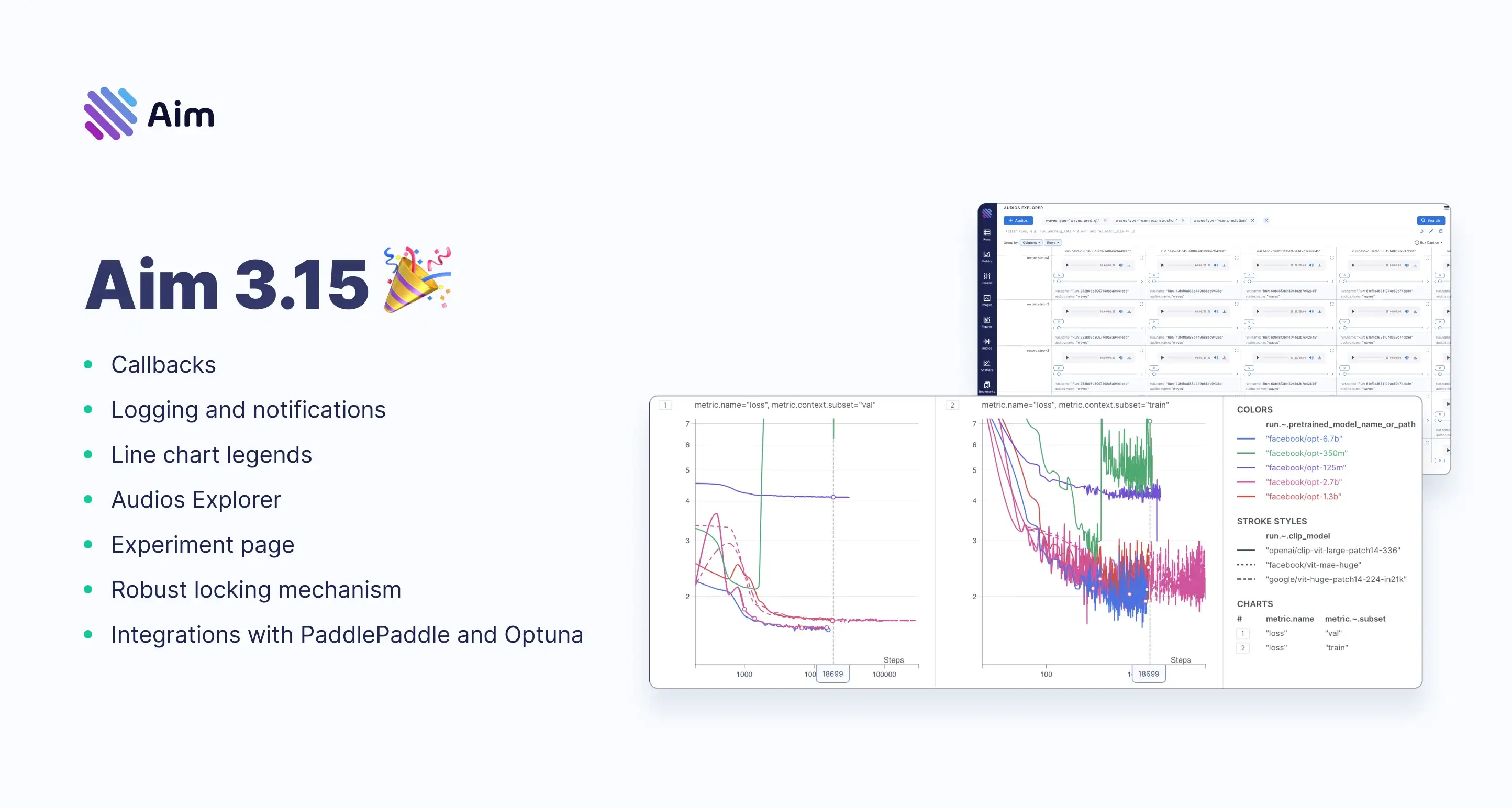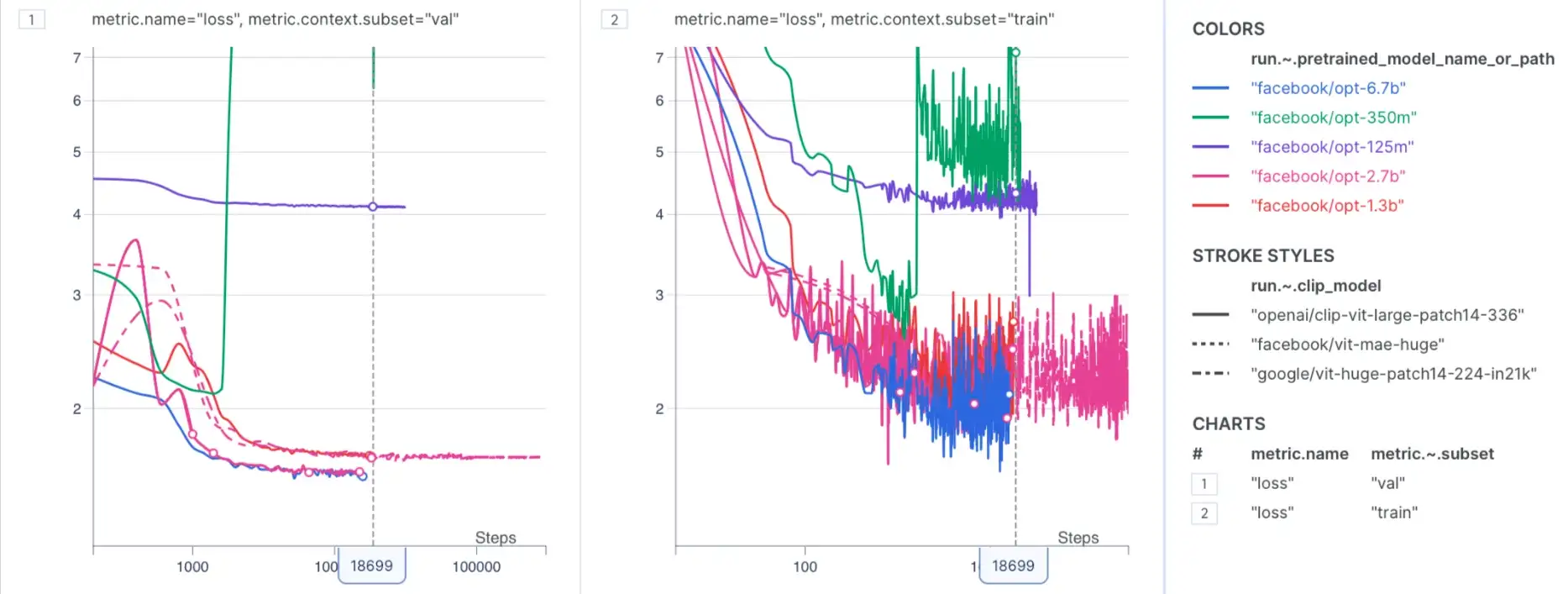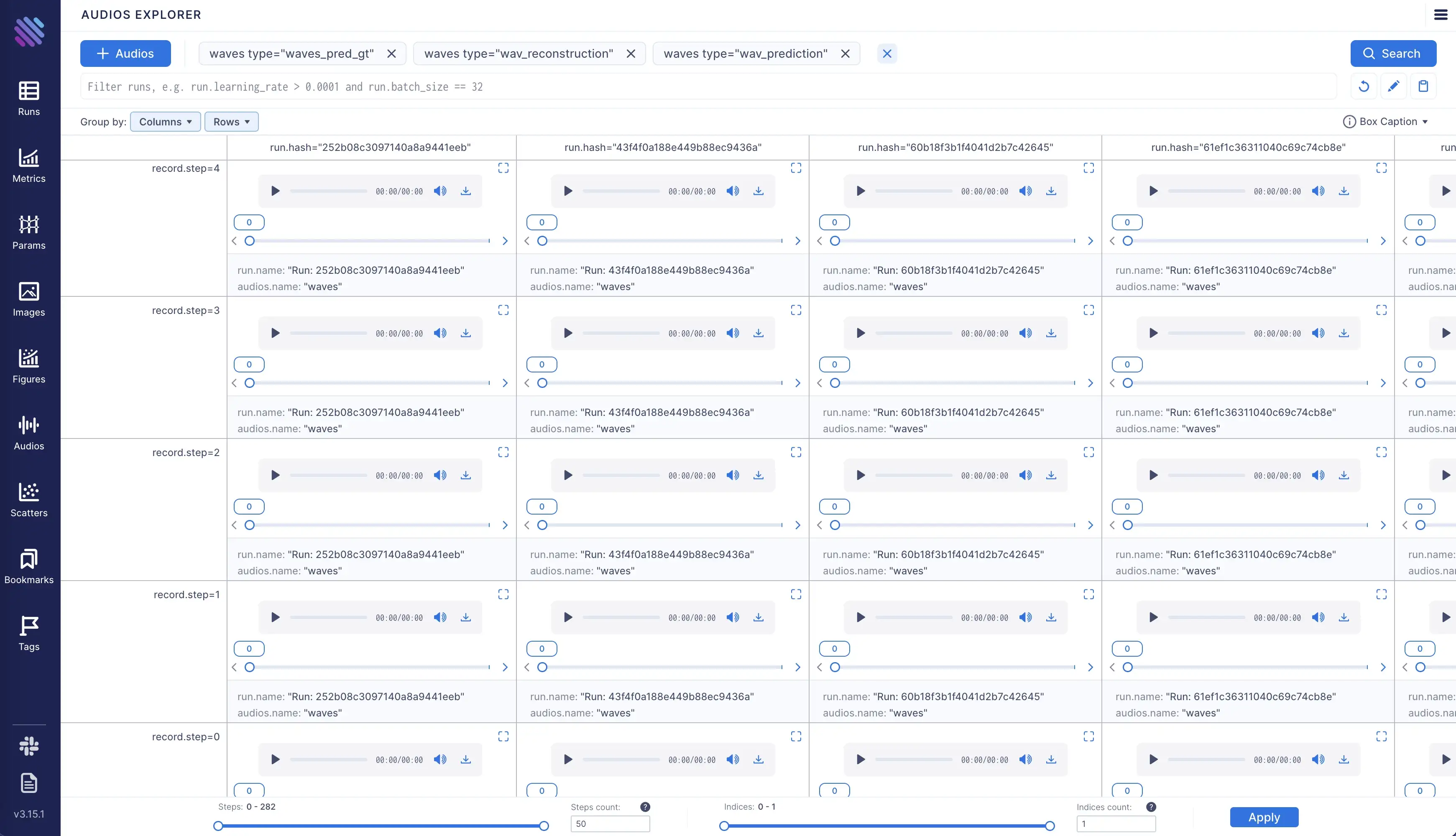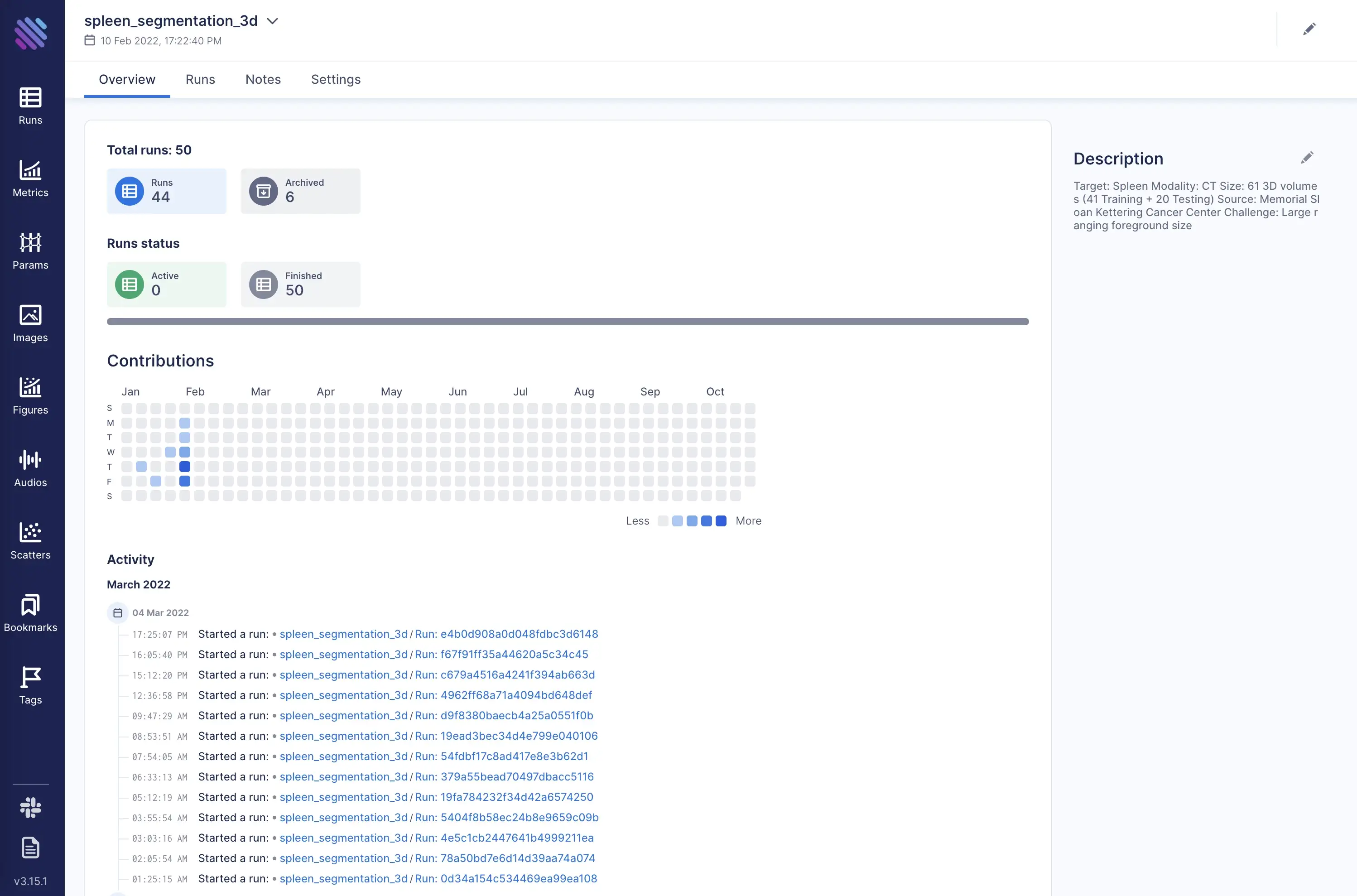Dec 6, 2022
Aim 3.15 — Callbacks, logging and notifications, line chart legends, experiment page, Audios Explorer

Hey team, get ready for a major upgrade!
We are thrilled to announce the release of Aim v3.15, packed with new features and improvements.
We are on a mission to democratize AI dev tools and are incredibly lucky to have the support of the community. Without your help, Aim would not be where it is today.
Congratulations to jangop, hjoonjang and kumarshreshtha for their first contributions.
TL;DR The new version includes lots of significant and highly requested enhancements, as well as key improvements. Here are the highlights:
- Callbacks
- Logging and notifications
- Line chart legends
- Audios Explorer
- Experiment page
- Robust locking mechanism
- Integrations with PaddlePaddle and Optuna
Aim SDK
Callbacks
Many things can go wrong during ML training that could result in wasted GPUs and time. The Aim callbacks API helps to define custom callbacks to be executed at any point during ML training.
Find API docs and examples here.
An end-to-end toy script below:
Send a notification and exits the process, when the loss explodes.
import random
import time
from aim import Run
from aim import TrainingFlow
from aim.sdk.callbacks import events
# Define the callbacks
class MyCallbacks:
@events.on.training_metrics_collected
def check_loss_explosion(self, metrics, run, **kwargs):
if metrics.get('loss') > 1:
# Log warning message and send the corresponding notification
run.log_warning(f'loss exploded: {metrics["loss"]}')
# Exit the process
exit()
# Initialize Aim run and register callbacks
run = Run()
training_flow = TrainingFlow(run=run)
training_flow.register(MyCallbacks())
# Training simulation
for _ in range(100):
loss = random.random() * 2
print(loss)
run.track(loss, name='loss', context={'subset': 'train'})
training_flow.training_metrics_collected(
metrics={'loss': loss},
run=run
)
time.sleep(1)Logging and notifications
During the training many key events happen. Use new Aim logging API to log any text message and send the corresponding notification to slack or workplace. It is as easy as calling aim_run.log_error(message).
It perfectly fits with callbacks API and enables programmatically defining training heuristics and including it as part of the code. A simple example is “let me know when the training run starts to overfit”.
Read more in the docs.
Aim UI
Chart legends
Since the early days of Aim’s launch, one of the most requested features has been displaying chart legends. And finally it is here! The legends section makes it easy to learn metrics corresponding fields and hyper-params at a glance.

Audios Explorer
To track the performance of ML models that process speech data, it is important to track audio objects.
The new Audios Explorer makes it super easy to query and play tracked audio objects across the runs. Flexible grouping options enable arranging them into rows and columns to make exploration even easier.

Experiment page
The experiment page provides an holistic view of the results of the trainings in order to identify trends and patterns that can help inform further experimentation and optimization.
Experiment page consists from the following tabs:
- 🏠 Overview — Experiment overview, number of active/finished runs, timeline of the runs.
- 🏃 Runs —Holistic view of the experiment runs.
- 📓 Notes — Experiment notes and insights with notion-like rich editor.
- ⚙️ Settings — Experiment settings, such as name and description.

Integrations
Integration with PaddlePaddle
With Aim v3.15 it takes just two steps to integrate Aim into your PaddlePaddle training script.
# Step 1: Explicitly import the AimCallback for tracking training metadata
from aim.paddle import AimCallback
...
# Step 2: Pass the callback to callbacks list upon initiating your training
callback = AimCallback(repo='.', experiment='paddle_test')
model.fit(train_dataset, eval_dataset, batch_size=64, callbacks=callback)See docs here.
Integration with Optuna
Smoothly integrate Aim into your Optuna project.
Here are the docs and a short code snippet.
from aim.optuna import AimCallback
...
aim_callback = AimCallback(experiment_name="optuna_single_run")
study.optimize(objective, n_trials=10, callbacks=[aim_callback])Key optimizations and fixes
Runs locking mechanism and finished runs detection
Number of issues were reported w.r.t runs locking. More robust locking mechanism is applied starting from Aim v3.15.
Remote server scaling
Now it is possible to spin up several workers to achieve higher processing speed for remote tracking server. Just run the server passing “workers” argument: aim server --workers=N
Learn more
Aim is on a mission to democratize AI dev tools. 🙌
Try out Aim, join the Aim community, share your feedback, open issues for new features, bugs.
Don’t forget to leave us a star on GitHub if you think Aim is useful ⭐️